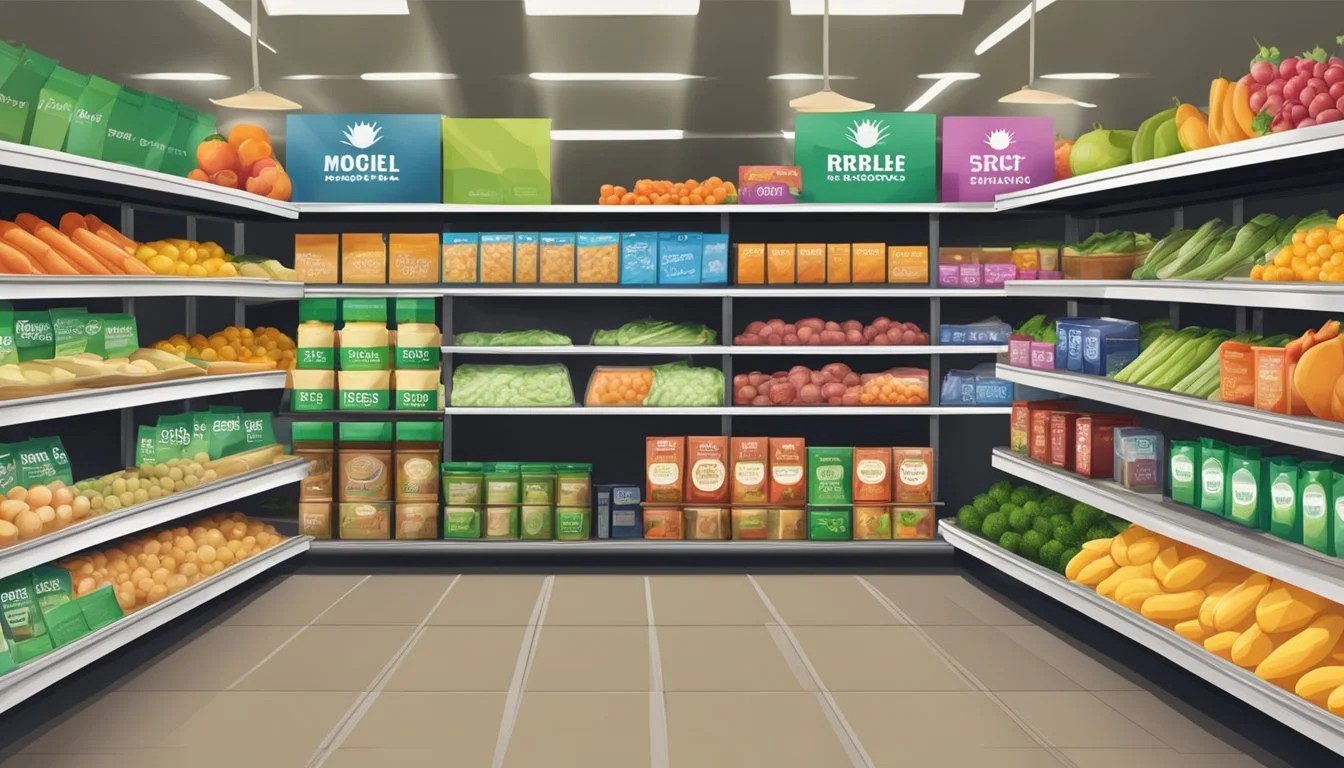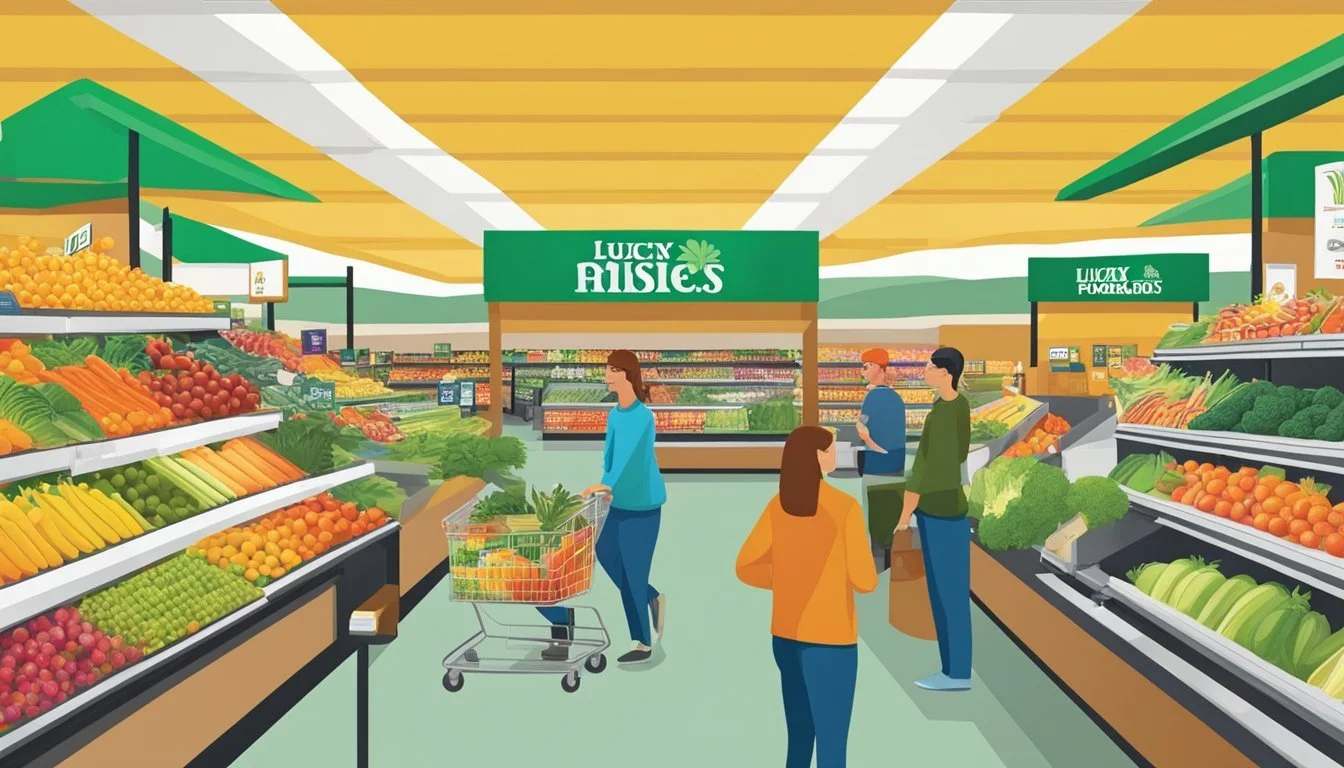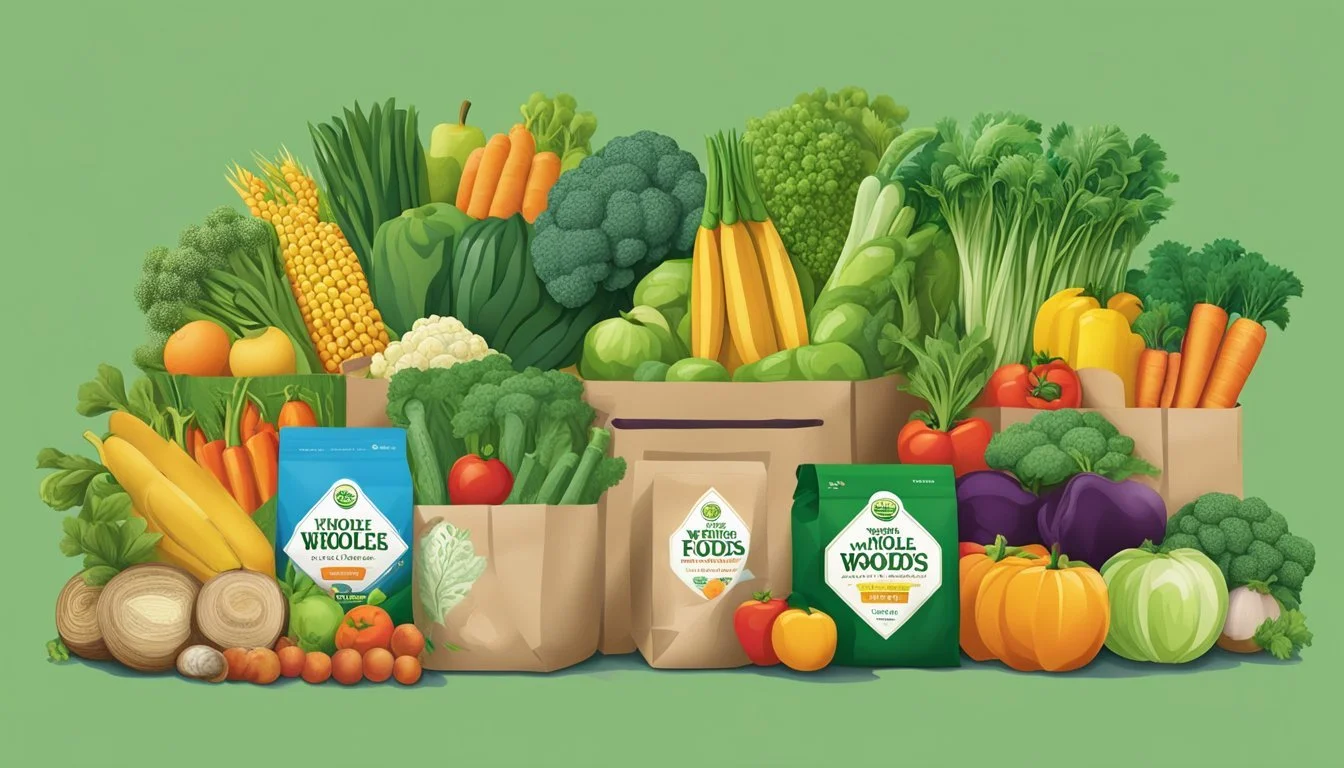Lucky Supermarkets vs Whole Foods
A Comprehensive Comparison of Price, Quality, and Selection
Lucky Supermarkets and Whole Foods represent two distinct approaches to grocery shopping, catering to different consumer preferences and priorities. While Lucky Supermarkets focuses on providing affordable options for budget-conscious shoppers, Whole Foods has built its reputation on offering high-quality organic and natural products.
When comparing overall value, Lucky Supermarkets generally offers lower prices across a wide range of everyday items, potentially saving customers hundreds of dollars annually compared to shopping at Whole Foods. This pricing difference can be significant for families who spend a substantial portion of their budget on groceries.
Whole Foods, acquired by Amazon in 2017, has made efforts to become more competitive on pricing, particularly for Prime members. However, it still maintains its focus on premium, organic, and specialty products that appeal to health-conscious consumers willing to pay more for perceived quality and ethical sourcing.
Brand Overview
Lucky Supermarkets and Whole Foods Market represent distinct approaches to grocery retail. Each chain caters to different consumer needs and preferences through their product offerings, store environments, and overall brand positioning.
Lucky Supermarkets at a Glance
Lucky Supermarkets operates as a regional supermarket chain primarily in Northern California. The brand focuses on providing affordable groceries and household essentials to budget-conscious shoppers. Lucky stores typically feature a no-frills layout with an emphasis on competitive pricing.
Their product selection includes a mix of national brands and private label items. Lucky's own brand products offer value alternatives across various categories. The chain maintains a conventional supermarket format, carrying fresh produce, meats, dairy, and packaged goods.
Lucky Supermarkets aims to serve local communities with convenient locations and everyday low prices. The brand positions itself as a practical choice for families and individuals seeking to stretch their grocery budgets.
Whole Foods Market Profile
Whole Foods Market is a national organic and natural foods supermarket chain. The company specializes in high-quality, organic, and specialty products. In 2017, Amazon acquired Whole Foods, integrating the grocer into its broader retail ecosystem.
Whole Foods stores are known for their upscale ambiance and curated product selection. The chain emphasizes organic, non-GMO, and sustainably sourced items across all departments. Their 365 by Whole Foods Market private label offers organic alternatives at more accessible price points.
The brand attracts health-conscious consumers and food enthusiasts willing to pay premium prices for quality ingredients. Whole Foods differentiates itself through strict quality standards, extensive prepared foods sections, and in-store dining options.
Product Selection and Quality
Lucky Supermarkets and Whole Foods offer distinct product selections, with varying focuses on organic, conventional, and specialty items. Both stores aim to provide quality options, but their approaches differ in key areas.
Diversity of Products
Lucky Supermarkets stocks a wide range of conventional grocery items, catering to everyday needs. Their shelves feature popular national brands alongside budget-friendly alternatives.
Whole Foods emphasizes natural and organic products, with a curated selection of specialty and gourmet items. The store offers extensive choices in health food categories, international cuisines, and dietary-specific options.
Lucky provides a solid variety of fresh produce, meats, and dairy. Whole Foods excels in offering unique and hard-to-find ingredients, appealing to food enthusiasts and health-conscious shoppers.
Organic Produce and Quality Standards
Whole Foods is known for its stringent quality standards, particularly for organic produce. The store prohibits over 100 preservatives and ingredients commonly found in other groceries.
Lucky Supermarkets offers organic options, but their selection is typically more limited. They focus on providing affordable conventional produce to meet the needs of budget-conscious shoppers.
Both stores maintain quality control measures, but Whole Foods' standards are generally considered more rigorous. This is reflected in their pricing, with organic items often commanding a premium.
Private Label Offerings
Lucky Supermarkets' store brand products aim to provide value alternatives to national brands. These items cover basic grocery categories and are priced competitively.
Whole Foods' 365 brand encompasses a broader range of products, including organic and specialty items. These private label offerings maintain the store's quality standards while providing more affordable options.
Both chains use their store brands to differentiate themselves. Lucky focuses on everyday essentials, while Whole Foods extends its natural and organic ethos to its private label line.
Pricing Comparison
Lucky Supermarkets and Whole Foods employ distinct pricing strategies that cater to different customer segments. Their approaches to discounts, everyday prices, and overall value propositions vary significantly.
General Pricing Strategy
Lucky Supermarkets positions itself as a budget-friendly option for shoppers. The chain focuses on offering competitive prices across a wide range of products. Lucky aims to attract price-conscious consumers looking for good value.
Whole Foods, on the other hand, is known for its premium pricing. The store emphasizes high-quality, organic, and specialty products, which often come with higher price tags. Whole Foods targets customers willing to pay more for perceived quality and sustainability.
Discounts and Savings Opportunities
Lucky Supermarkets provides various ways for customers to save money. The store offers weekly specials, digital coupons, and a loyalty program. Shoppers can find significant discounts on select items each week.
Whole Foods has fewer broad discount programs. However, Amazon Prime members enjoy exclusive deals and an additional 10% off sale prices. The store occasionally runs promotions on specific product categories or seasonal items.
Comparing Everyday Prices
On average, Lucky Supermarkets' prices tend to be lower than Whole Foods for comparable items. Staple groceries, produce, and household goods are generally cheaper at Lucky.
Whole Foods' everyday prices are typically higher, especially for organic and specialty products. However, their store brand "365" offers more competitive pricing on select items.
A comparison of common grocery items:
Item Lucky Supermarkets Whole Foods Milk (1 gallon) $3.49 $4.99 Eggs (1 dozen) $2.99 $4.29 Bread (1 loaf) $2.49 $3.99
Lucky Supermarkets often uses loss leaders to draw customers, offering extremely low prices on certain products. Whole Foods rarely employs this strategy, maintaining consistent pricing across most items.
Shopping Experience
Lucky Supermarkets and Whole Foods offer distinct shopping environments tailored to different customer preferences. Each store has unique features that shape the overall experience for shoppers.
In-Store Services and Ambiance
Lucky Supermarkets provides a familiar, no-frills grocery shopping atmosphere. The stores focus on efficiency and value, with wide aisles and clear signage.
Whole Foods, in contrast, creates a more upscale ambiance. The stores feature natural wood elements, mood lighting, and artful product displays. This cultivates a premium shopping experience.
Both offer prepared food sections, but Whole Foods typically has more extensive options. Their hot and cold bars, made-to-order stations, and seating areas encourage customers to linger.
Lucky Supermarkets may have basic deli counters and bakery sections. Whole Foods often includes specialty departments like cheese shops, wine bars, and juice bars.
Convenience and Accessibility
Lucky Supermarkets generally have longer operating hours, catering to early morning and late-night shoppers. Their locations are often found in suburban areas with ample parking.
Whole Foods stores are frequently situated in urban centers or affluent neighborhoods. This can make them less accessible for some customers but more convenient for others.
Both chains offer grocery delivery options. Lucky partners with Instacart, while Whole Foods leverages Amazon's delivery infrastructure for quick service.
Self-checkout lanes are common in Lucky Supermarkets, speeding up the checkout process. Whole Foods stores may have fewer but often feature mobile checkout options.
Customer Service Excellence
Whole Foods emphasizes employee knowledge about products, especially in specialty departments. Staff members are often trained to offer recommendations and answer questions about organic and natural foods.
Lucky Supermarkets focus on friendly, efficient service. Cashiers and stock clerks aim to keep lines moving quickly and shelves well-stocked.
Both stores typically offer assistance with bagging groceries. Whole Foods may provide extra services like carrying groceries to customers' cars.
Customer service desks in both stores handle returns and exchanges. Whole Foods often has dedicated areas for online order pickups, enhancing convenience for those using their digital services.
Stores and Locations
Lucky Supermarkets and Whole Foods have distinct store presence and expansion strategies. Their locations reflect different approaches to serving customers across the United States.
Regional Store Presence
Lucky Supermarkets maintains a strong regional focus in Northern California. The chain operates around 70 stores concentrated in the San Francisco Bay Area and surrounding regions.
Lucky's stores are typically found in suburban neighborhoods and smaller towns. They range in size from 20,000 to 40,000 square feet, offering a mix of conventional and specialty products.
In contrast, Whole Foods has a broader regional presence. The company operates over 500 stores across most U.S. states. Whole Foods locations are often situated in urban areas and affluent suburbs.
National Reach and Expansion
Whole Foods has achieved a national footprint through strategic growth and acquisitions. The company expanded rapidly in the 2000s and 2010s, entering new markets across the country.
In 2017, Amazon acquired Whole Foods, further accelerating its expansion. This move enhanced Whole Foods' ability to reach customers through both physical stores and online channels.
Lucky Supermarkets, owned by Save Mart Supermarkets, has maintained its regional focus. The chain has not pursued aggressive national expansion, instead concentrating on serving its core Northern California market.
Customer Perceptions and Ratings
Lucky Supermarkets and Whole Foods have distinct reputations among shoppers. Customer satisfaction and loyalty differ between the two chains, as do their ratings in consumer surveys.
Loyalty and Customer Satisfaction
Lucky Supermarkets attracts budget-conscious shoppers with its competitive prices and weekly deals. Many customers appreciate the store's no-frills approach and familiar product selection.
Whole Foods, on the other hand, draws health-conscious consumers willing to pay premium prices for organic and specialty items. Its devoted fan base values the chain's high-quality produce and extensive selection of natural products.
Both stores have loyal customers, but for different reasons. Lucky's regulars often cite affordability as their main draw, while Whole Foods shoppers tend to prioritize product quality and variety.
Consumer Surveys and Public Ratings
In national grocery store rankings, Whole Foods typically scores higher than Lucky Supermarkets. Consumer Reports rates Whole Foods among the top supermarkets for cleanliness and quality of produce.
Lucky Supermarkets receives average ratings in most consumer surveys. Shoppers give it positive marks for value but lower scores for selection and store atmosphere.
Online reviews reflect these trends. Whole Foods garners praise for its fresh offerings and customer service. Lucky gets mixed feedback, with price-conscious shoppers appreciating the deals while others note limited organic options.
Public perception of the two chains differs significantly. Whole Foods has cultivated an upscale image, while Lucky is seen as a more modest, everyday grocery option.
Special Features and Programs
Lucky Supermarkets and Whole Foods offer unique benefits and initiatives to enhance the shopping experience and promote sustainability. Both chains have implemented programs to reward loyal customers and reduce their environmental impact.
Membership Benefits
Lucky Supermarkets provides a free loyalty program called Lucky You Rewards. Members earn points on purchases, which can be redeemed for discounts on groceries and fuel. The program offers personalized deals based on shopping habits.
Whole Foods, as part of Amazon, extends exclusive benefits to Prime members. These include an extra 10% off sale items and special deals on select products. Prime members also enjoy free 2-hour grocery delivery in select areas.
Both stores offer digital coupons through their mobile apps, allowing customers to save money effortlessly. Lucky's app features weekly ads, while Whole Foods' app integrates with Amazon for a seamless shopping experience.
Sustainability and Social Responsibility Initiatives
Lucky Supermarkets focuses on reducing food waste through partnerships with local food banks. They prioritize energy-efficient store designs and promote reusable bags to minimize plastic usage.
Whole Foods emphasizes organic and sustainably sourced products. They maintain strict quality standards, banning over 100 ingredients commonly found in other stores. The chain supports local producers and fair trade practices.
Both stores have implemented recycling programs and work to reduce packaging waste. Whole Foods has eliminated single-use plastic bags and offers compostable containers for prepared foods.
Lucky Supermarkets supports local community initiatives through charitable donations. Whole Foods operates the Whole Planet Foundation, which provides microloans to entrepreneurs in developing countries.
Comparative Market Analysis
The grocery retail landscape is highly competitive, with several major chains vying for market share. Key factors influencing the industry include pricing strategies, product offerings, and evolving consumer preferences.
Competitor Analysis
Lucky Supermarkets and Whole Foods face stiff competition from several major grocery chains. Walmart leads in overall value, with a sample grocery basket costing $119.44 compared to $126.35 at competitors. Market Basket and Walmart offer prices 18-19% below the industry average.
Kroger, the largest traditional supermarket chain, competes on price and selection. Aldi focuses on low prices through a limited assortment of mostly private label products.
Sprouts Farmers Market and The Fresh Market target health-conscious consumers with organic and specialty items, similar to Whole Foods. Publix emphasizes customer service and a pleasant shopping experience.
Industry Trends
Grocery retailers are adapting to changing consumer preferences and shopping habits. Online grocery shopping and delivery services have grown significantly, with many chains expanding their e-commerce capabilities.
Health and wellness remain key trends. Organic, natural, and locally-sourced products continue to gain popularity. Retailers are increasing their selections of plant-based alternatives and functional foods.
Sustainability is becoming more important to consumers. Grocers are reducing plastic packaging, offering more eco-friendly products, and highlighting their environmental initiatives.
Private label products are seeing increased investment and quality improvements. Many chains are expanding their store brand offerings to compete on both price and quality.
Conclusion
Choosing between Lucky Supermarkets and Whole Foods depends on individual priorities and preferences.
Lucky Supermarkets offers competitive prices on everyday essentials. Their selection caters to budget-conscious shoppers seeking value.
Whole Foods excels in organic and specialty products. The store provides a curated shopping experience with high-quality, natural options.
For those prioritizing organic produce and unique items, Whole Foods is the superior choice. Lucky Supermarkets appeals to shoppers focused on affordability and familiar brands.
Both grocers maintain clean, well-organized stores. Lucky Supermarkets typically has a more straightforward layout, while Whole Foods creates an upscale atmosphere.
Ultimately, the decision rests on personal needs. Budget-minded consumers may prefer Lucky Supermarkets. Health-conscious shoppers willing to spend more often gravitate towards Whole Foods.
Consider trying both stores to determine which aligns best with your shopping habits and dietary requirements.









